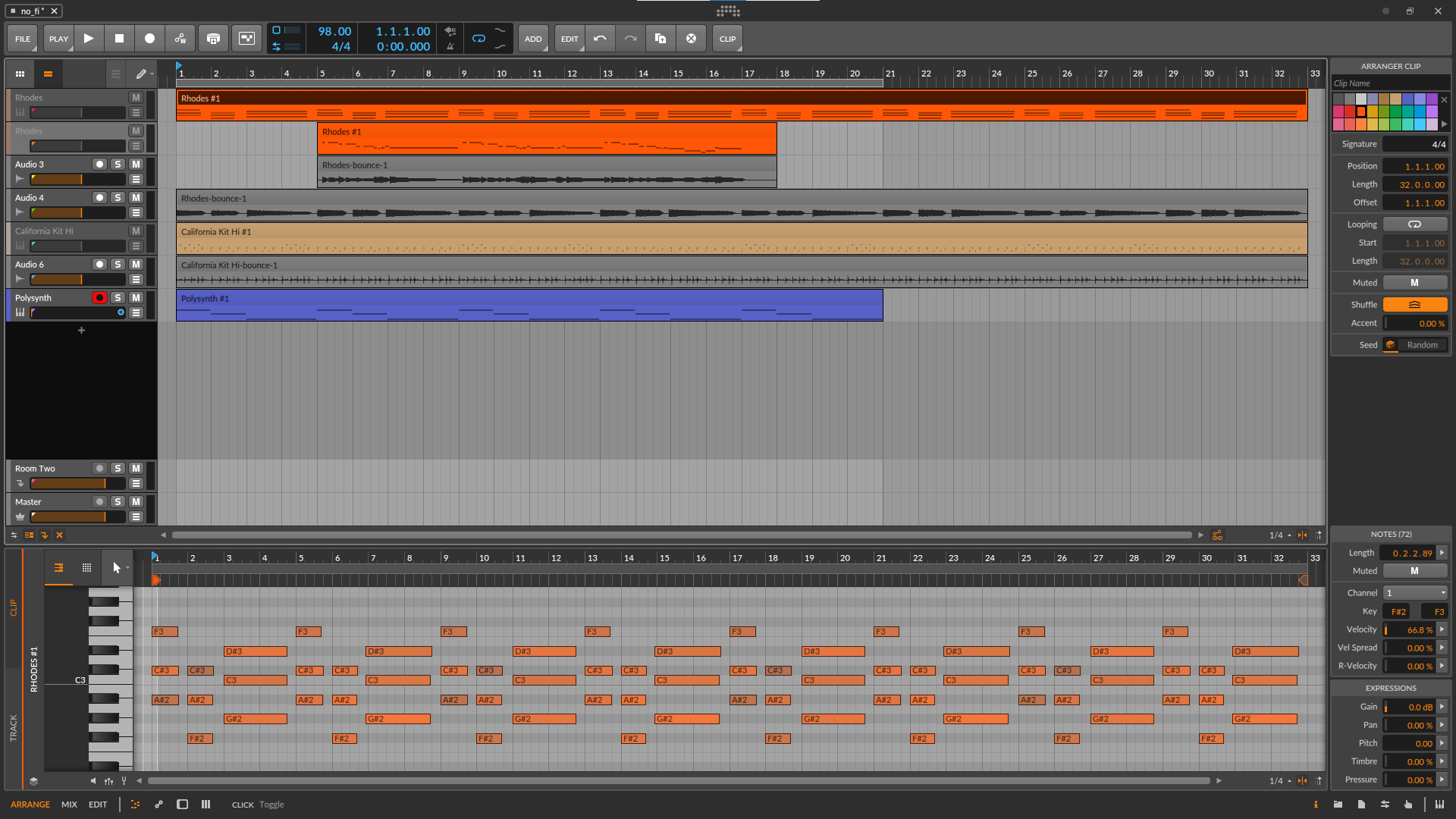creative accountability, no fi
Monday, July 4, 2022
Here is no-fi-2022-07-04-2338.mp3:
I heard a song at Target and pulled out my phone to start up Bandlab's keyboard to identify some of the notes. I caught F-sharp, A-flat and some other notes from the chord progression and planned to try them out later. I didn't feel like taking the time to identify the scale and all of its notes by name (it's bluesy), but I used what I knew to noodle out some chords on Bitwig's Rhodes, and eventually ended up with the following:

To get there, I tracked the chords first, sequenced/tracked the drums, then tracked the melody (improvised a handful of times and used the best takes). The tracking is very loose, but I'm attached to the idea of avoiding quantizing everything (blame J Dilla) until I've improved my fundamental keyboard and drum pad abilities. I panned some of the drum sounds, ran the whole drum machine through a compressor for more punch, and mixed all the tracks into a reverb FX track.
After all this, the track still felt sparse. (I think that sparseness ultimately boils down to amateur musicality—seventh chords would sound fuller and more expressive than triads, for example.) I've been hearing a lot of textural components in songs that I like—samples or stabs or brief, shallow-sounding synth noises—and so I felt inspired to emulate that kind of approach to bolster the mix. After browsing through Bitwig's various FX presets and finding nothing appropriate (but many cool sounds for a different kind of track), I eventually settled on designing a bass noise in Polysynth. This was a really satisfying exercise—I liked the gravity it added, and I got to use Bitwig's automation feature to slowly raise the volume on the Polysynth's mixer track and bring it in relatively late into this short composition.